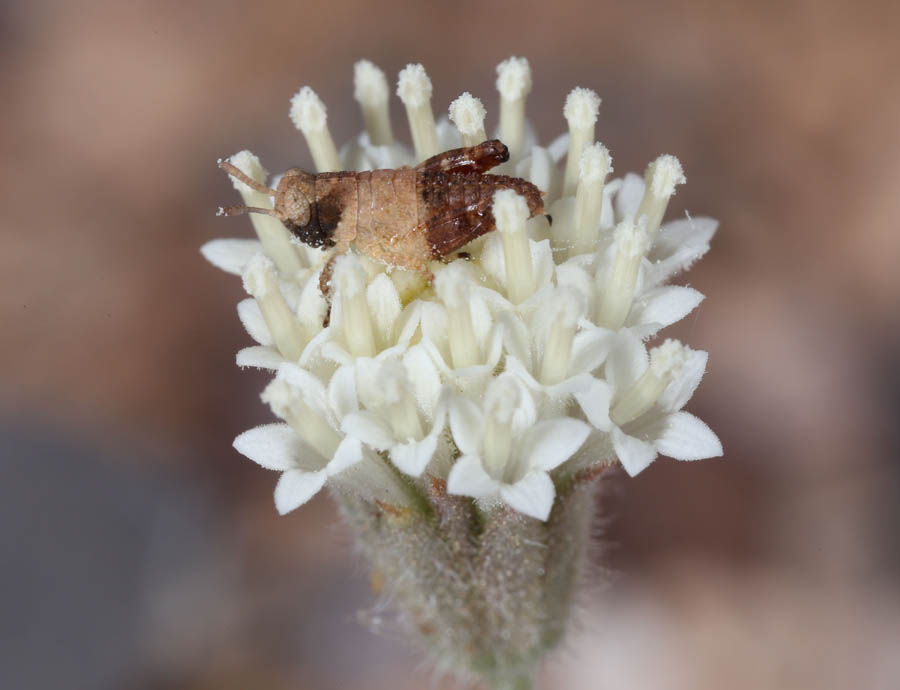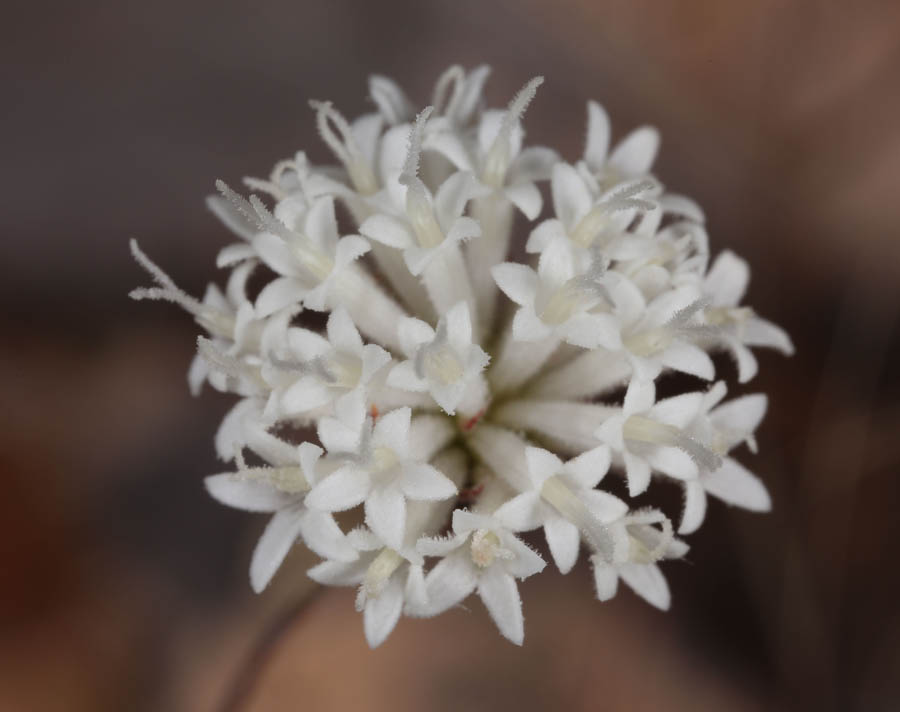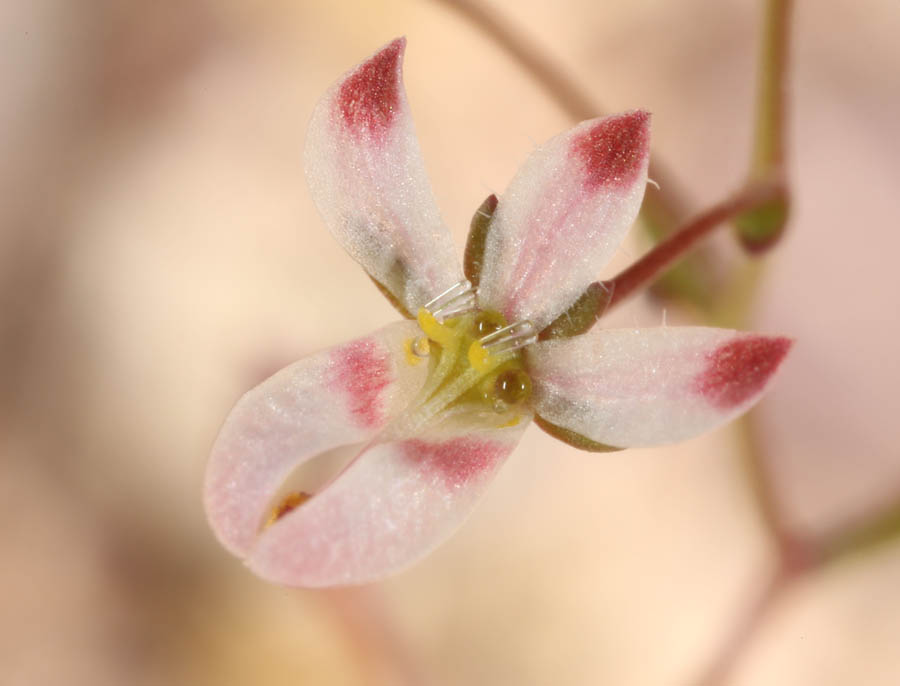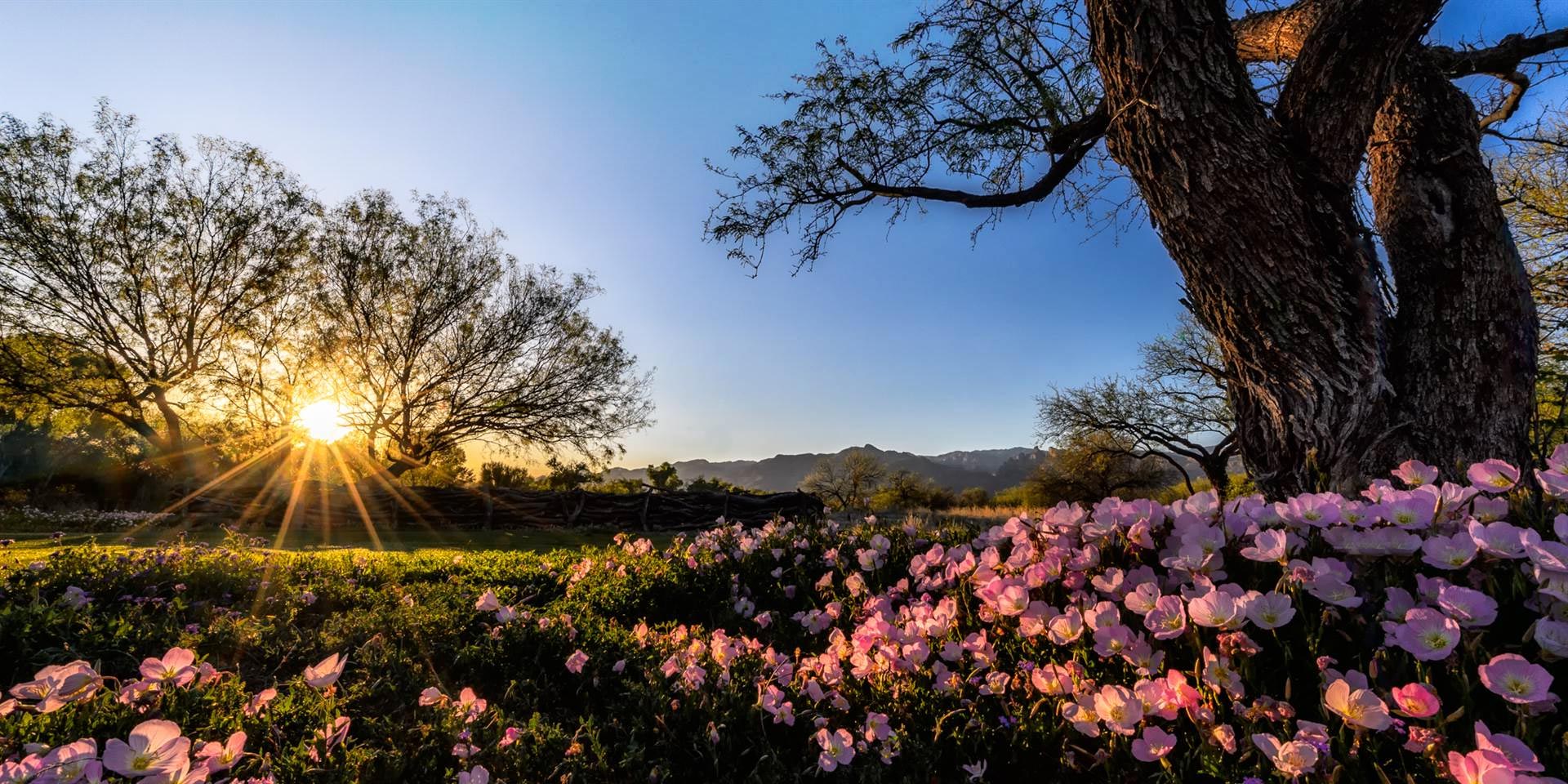Ironwood Forest National Monument, March and April
Posted Jun 01, 2023
Wild Ride on a Roller Coaster, Spring 2023, Part 2
by Jillian Cowles
What an incredible spring this has been!
The contrast between the Ironwood Forest National Monument and Picacho Peak was startling. Though not far apart geographically speaking (about 13 miles as the raven flies), there was very little overlap in the species of wildflowers blooming.
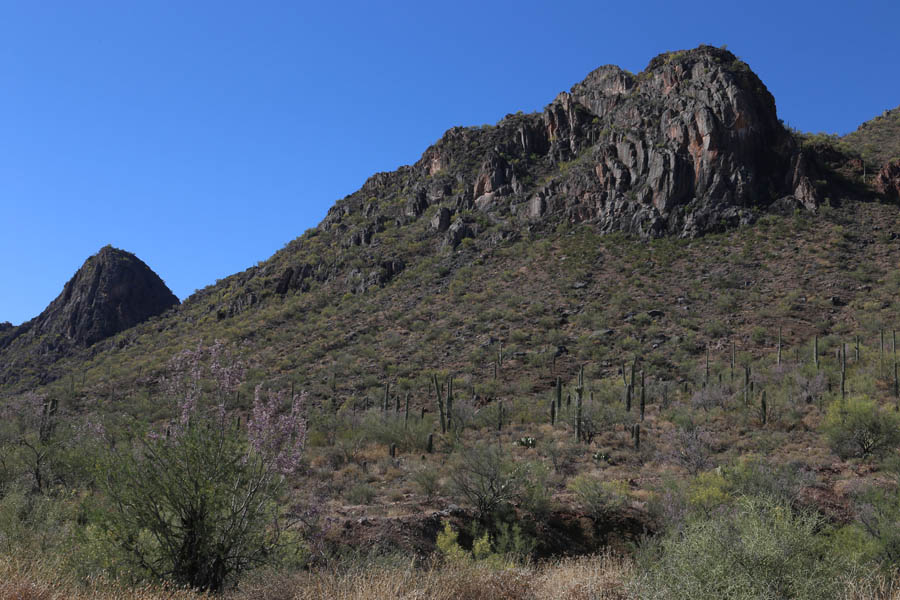
In March, the Ironwood Forest National Monument had miniature composites (Monoptilon bellioides and Eriophyllum lanosum) scattered across the ground, in some areas as numerous as the stars in the sky.
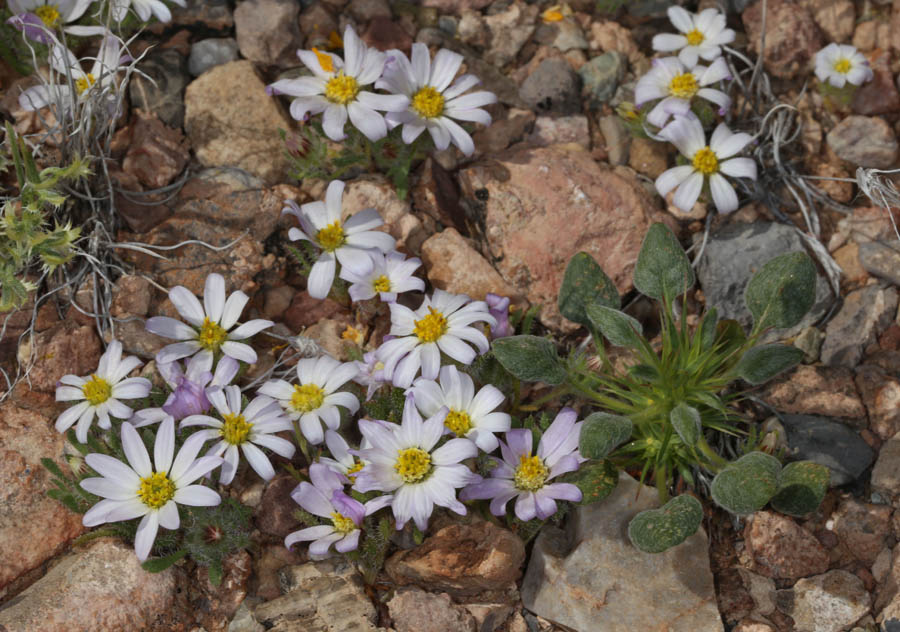
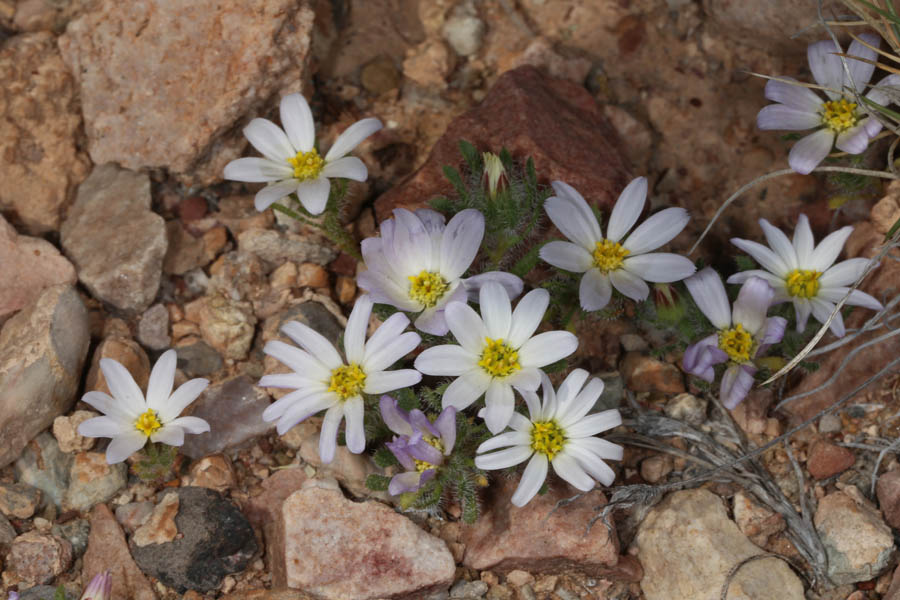
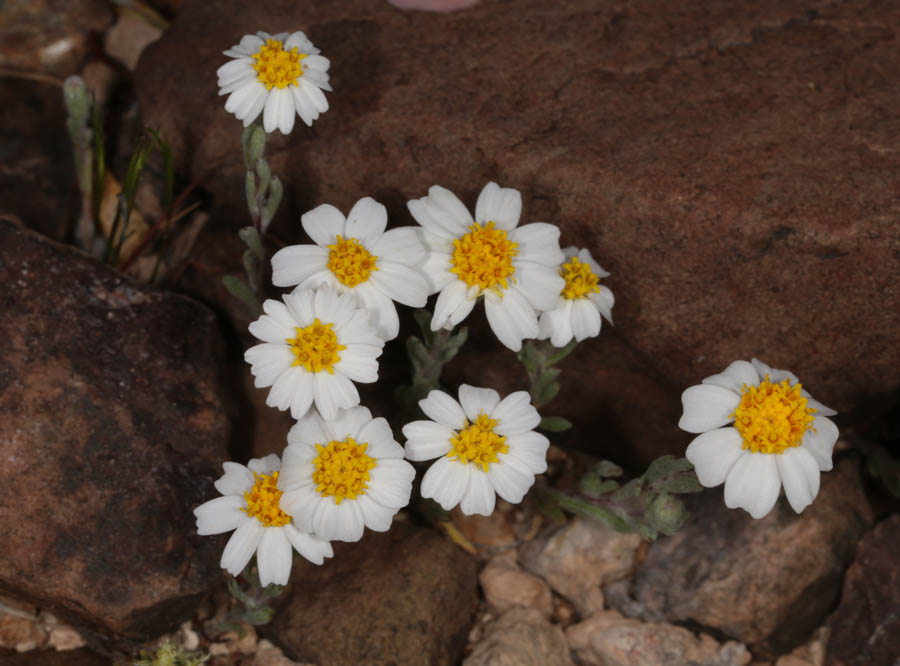
Desert onion (Allium macropetalum) and blue dicks (Dipterostemon capitatus pauciflorus) grew best when tucked in the shelter of other vegetation.
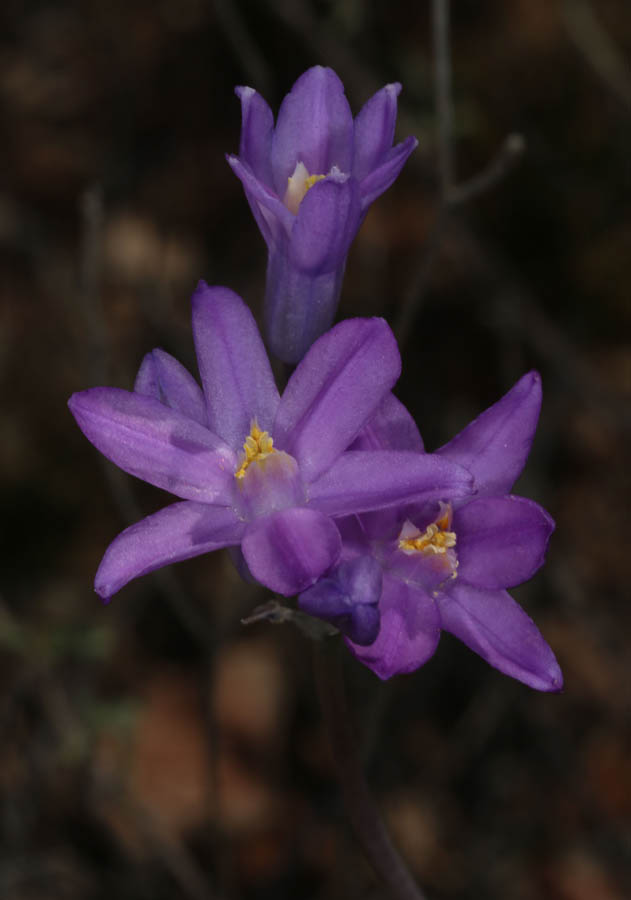
Dipterostemon capitatus pauciflorus

Dipterostemon capitatus pauciflorus
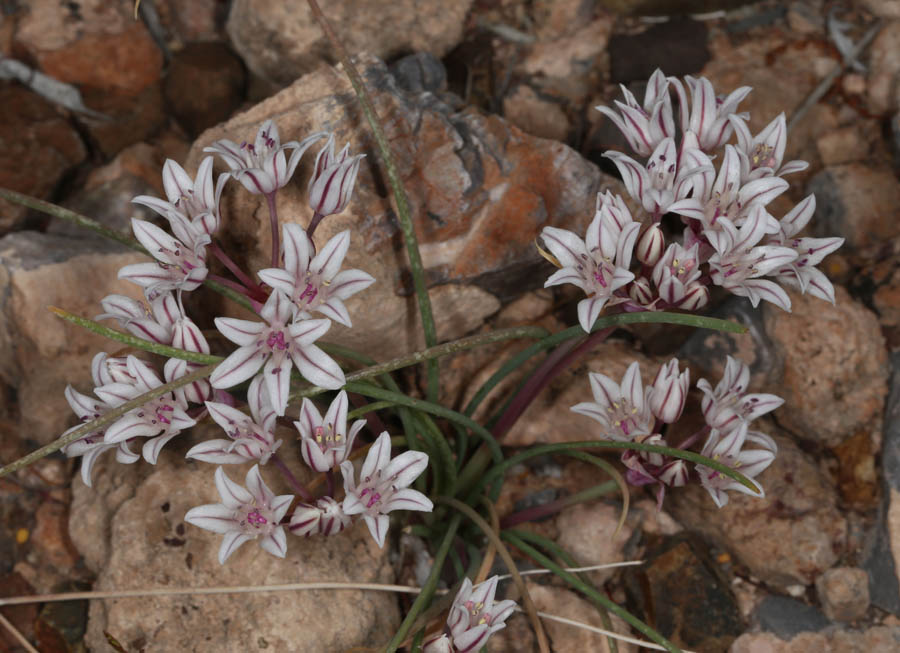
Desert anemones (Anemone tuberosa) and scorpionweed (Phacelia crenulata) added touches of pink or purple. Caliche mallow (Sphaeralcea laxa) blooms with pinkish flowers in the Waterman Mountains, different from the orange form seen more commonly in the Rincon foothills. The mallow specialist bee Diadasia diminuta can often be seen in these flowers.

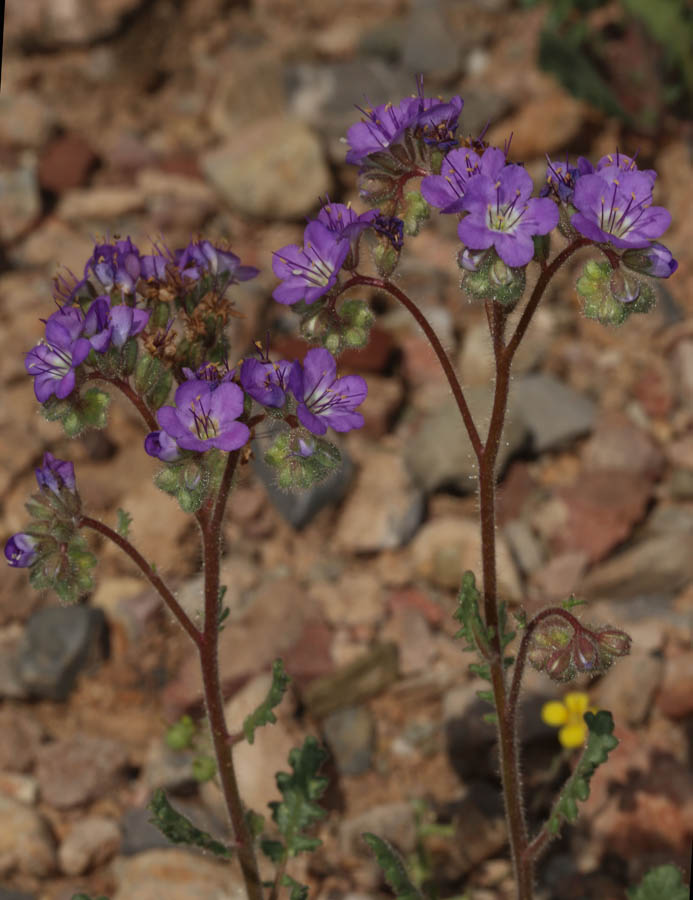
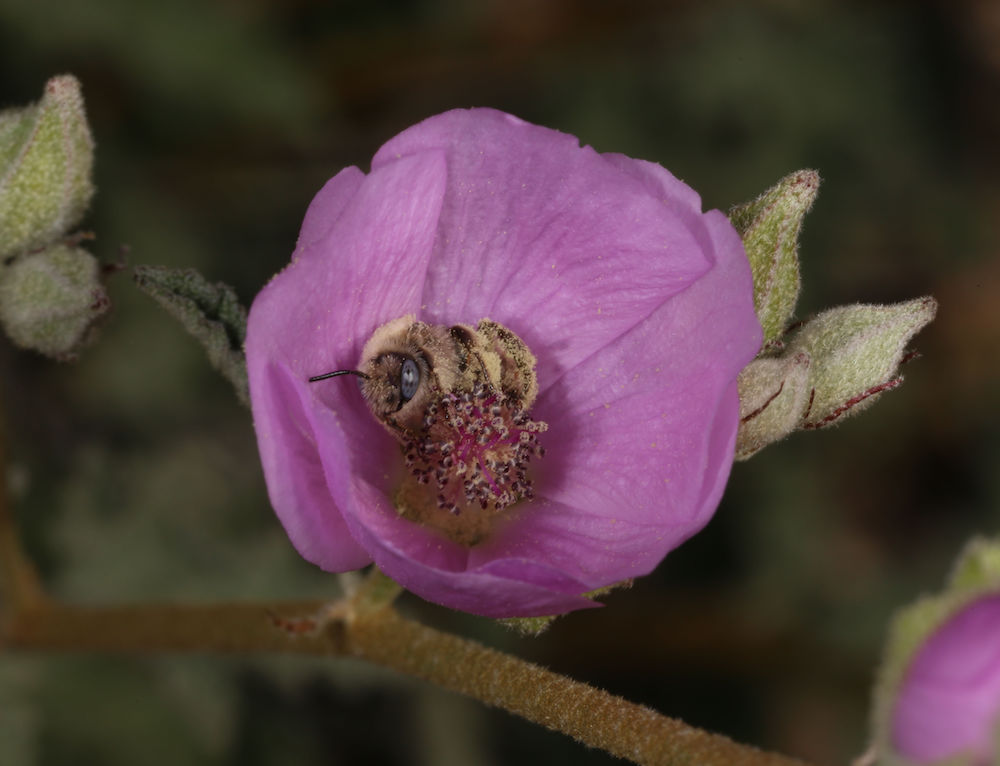
To be expected, plants in the mustard family (Brassicaceae) were among the earliest blooming wildflowers, including Gordon’s bladderpod (Physaria gordonii) and jewelweed (Streptanthus carinatus arizonicus).
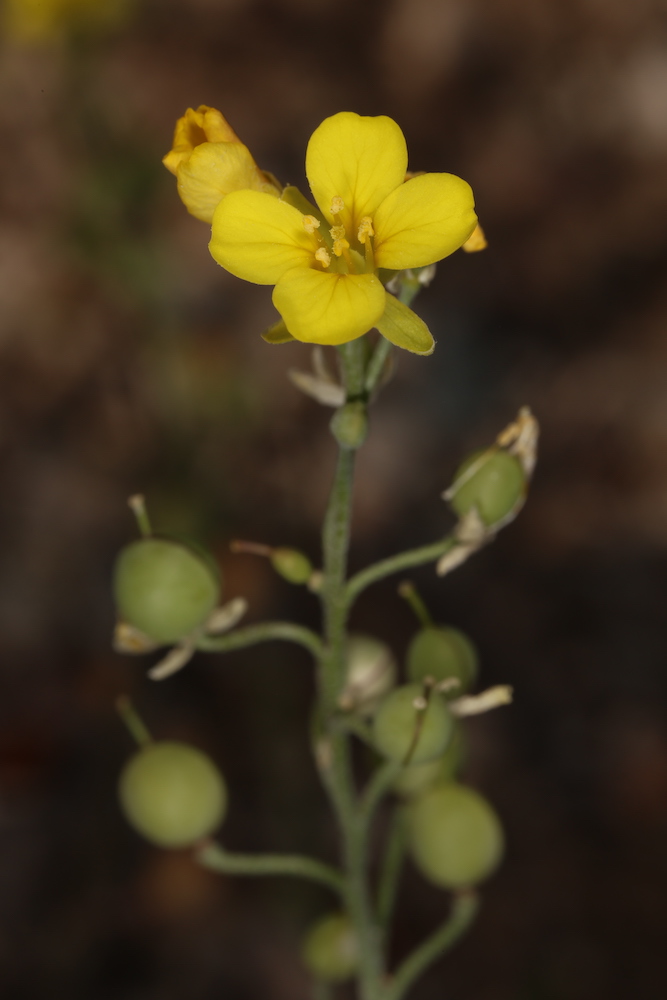
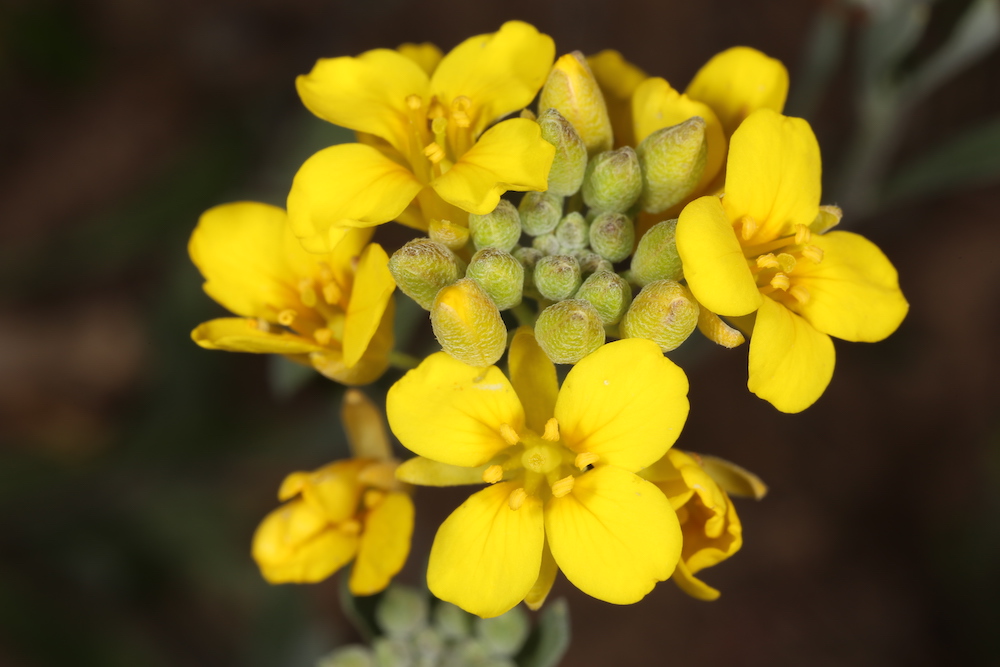
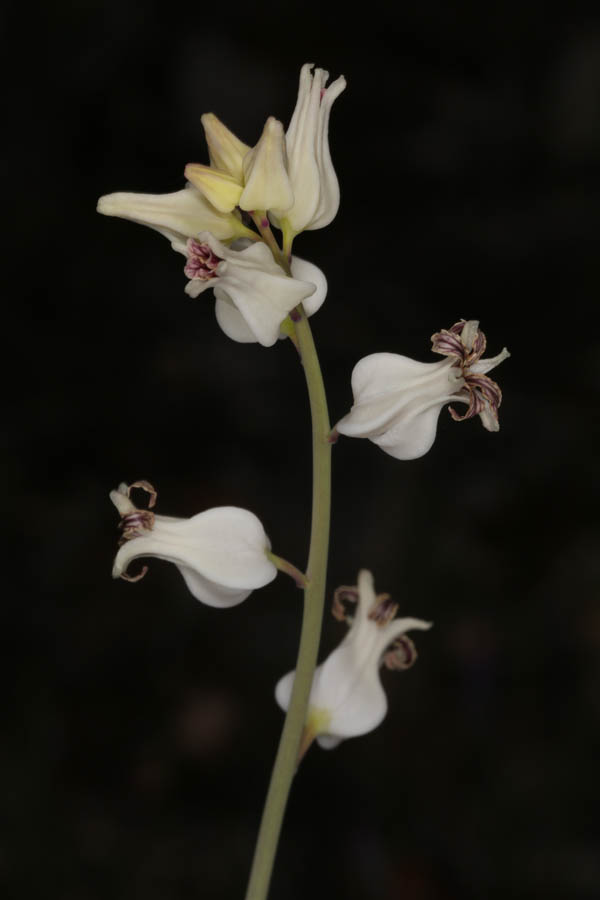
By mid-April, hedgehog cactus (Echinocereus fasciculatus), mountain larkspur (Delphinium scaposum), rock hibiscus (Hibiscus denudatus), and many other flowers were blooming.


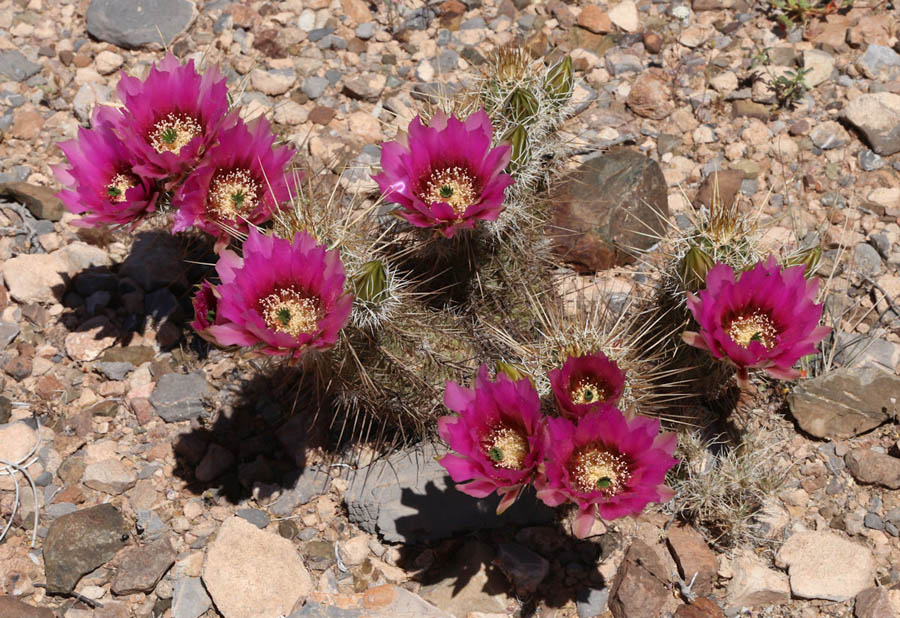
Some were tiny, such as the spineflower (Chorizanthe rigida) and Guadalupe cat’s eye (Cryptantha maritima).
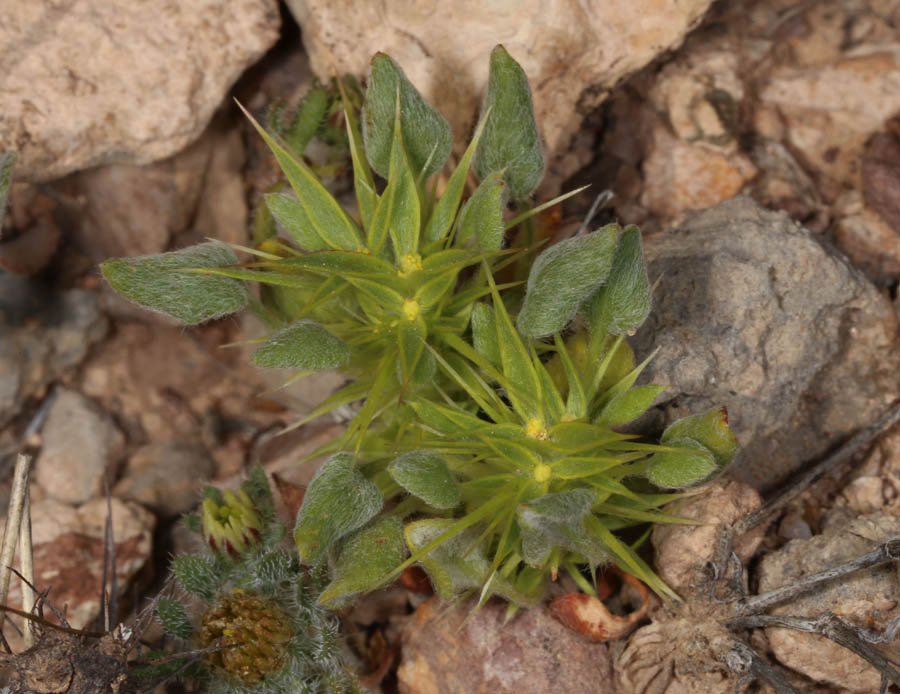

The Waterman restoration site was carpeted with a dazzling mass of brittlebush flowers, beautiful to see. But it was also getting hot by mid-April. Even photographing a few plants such as desert pincushion (Chaenactis stevioides), desert trumpet (Eriogonum inflatum), and threadstem (Nemacladus orientalis) left me wiped out. I never did get photos of the spectacular brittlebush.
